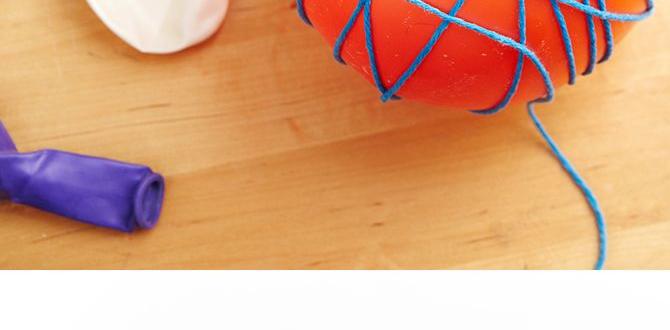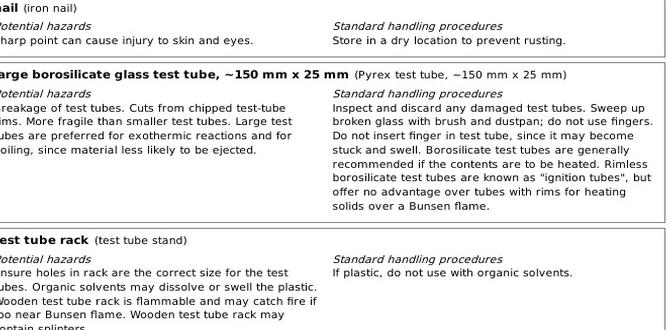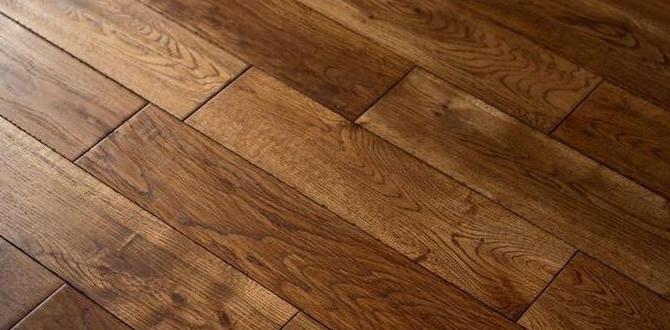Quick Summary: Master nail gun calibration with this effortless, step-by-step guide. Learn to adjust depth settings, pressure, and firing for perfect nail penetration every time. Ensure safety and achieve professional results on your DIY projects with confidence.
Ever found yourself frustrated when your nail gun sinks nails too deep, leaving unsightly dimples, or leaves them sticking out, compromising your work? You’re not alone! This is a super common issue, especially when you’re starting out. The good news is that fixing it is usually pretty simple. It all comes down to a bit of “calibration” – that’s just a fancy word for fine-tuning its settings so it works just right for your specific project and materials. By taking a few simple steps, you can transform your nailer from a potential project-ruiner into a powerful, reliable tool. Ready to get those perfectly driven nails? Let’s walk through it together, step by step!
Table of Contents
Why Nail Gun Calibration is Your Secret Weapon
Think of your nail gun like a precise instrument. It needs to be tuned correctly to perform at its best. When your nail gun isn’t calibrated, you can run into a whole host of problems:
- Damaged Materials: Nails driven too deep can shatter delicate wood or pierce through thin materials, ruining your workpiece.
- Weak Joints: Nails that don’t sink enough won’t provide a strong hold, potentially leading to structural issues down the line.
- Frustration & Wasted Time: Constantly stopping to fix overdriven or underdriven nails slows you down and can be incredibly annoying.
- Compromised Aesthetics: Visible nail heads or dents disrupt the smooth finish you’re aiming for.
Proper calibration ensures that each nail is driven to the correct depth consistently. This means stronger joints, cleaner finishes, and less time spent fixing mistakes. It’s about making your nailer work for you, not against you.
Understanding Your Nail Gun Settings
Before we dive into the calibration process, it’s important to get familiar with the main settings or adjustments on your nail gun. While every model is a little different, most have a few key areas you can tweak. Check your owner’s manual for specifics, but you’ll typically find:
Depth Adjustment Dial/Wheel
This is your primary tool for controlling how deep the nail is driven. It’s usually a rotating dial or a wheel located near the nose of the gun, often with markings indicating depth settings (like plus/minus symbols or numbers). Turning it one way will drive nails deeper, and turning it the other will make them sit higher.
Air Pressure Regulator (for Pneumatic Nailers)
If you’re using an air-powered nail gun, the amount of air pressure (measured in PSI – Pounds per Square Inch) is a crucial factor. Too much pressure can drive nails too deep, while too little won’t drive them effectively. This is usually controlled at your air compressor’s regulator. For cordless or gas nailers, this is less of a user-adjustable setting, but understanding the power source is key.
Nail Jam Release / Nose Cover
While not directly for calibration, knowing how to safely clear a nail jam or access the nose of your gun is essential. Always disconnect the power source (air hose or battery) before attempting this. Many guns have a lever or a sliding cover for this.
Firing Mode Selector (if applicable)
Some nailers have selectable modes, like “sequential fire” (press to set nail, then trigger to fire) or “contact fire” (rapid fire by pushing the nose onto the surface and pulling the trigger). While not calibration, being in the right mode affects how you apply the gun and can sometimes influence perceived nail depth.
Take a few minutes to locate these on your specific nailer. It doesn’t take long and will make the calibration process much smoother.
The Step-by-Step Nail Gun Calibration Process
Alright, ready to get hands-on? This process is designed to be straightforward, so don’t worry if you’re new to this. We’ll be working with a scrap piece of the same material you plan to nail into.
Step 1: Gather Your Materials and Safety Gear
Before you start, make sure you have everything ready. This makes the process efficient and safe.
Essential Items:
- Your Nail Gun: Make sure it’s clean and in good working order.
- Appropriate Nails: Use the correct size and type of nails recommended for your gun.
- Scrap Material: This is crucial! Grab a piece of the wood or material you’ll be working on. It should be at least a couple of inches thick if possible, to accurately test nail depth.
- Air Compressor & Hose (for Pneumatic): Ensure your compressor is functioning and the hose is securely connected.
- Eye Protection: Safety glasses or goggles are a must.
- Hearing Protection: Nail guns can be loud.
- Work Gloves: Optional but recommended for better grip and protection.
Step 2: Set Up Your Workspace
Find a well-lit area where you can work safely. Lay your scrap material on a stable surface like a workbench or sawhorses. Make sure there’s nothing behind your scrap material that could be damaged by a misfired nail.
Step 3: Connect Power and Set Initial Air Pressure (Pneumatic)
For Pneumatic Nailers:
Connect your air hose to your nail gun. Turn on your air compressor. Set the regulator on your compressor to the lower end of the recommended PSI range for your specific nail gun. Your nail gun’s manual will have this information, but a good starting point for framing nailers is often around 80-90 PSI, and for finish nailers, it might be 70-80 PSI. Always check your manual!
For Cordless/Gas Nailers:
Ensure your battery is charged or your fuel cell is properly installed. Refer to your manual for any specific power-up procedures.
Step 4: Set the Depth Adjustment
Locate the depth adjustment on your nail gun. For this initial test, set it to a middle setting. If it’s a numbered dial, try “3” or “4.” If it’s a plus/minus system, set it right in the middle. If it has indicators like “1, 2, 3,” start with “2.”
Pro Tip: If you’re unsure where to start, consult your nail gun’s manual. They usually provide a recommended starting point for depth adjustment.
Step 5: Make Your First Test Nails
Hold the nail gun firmly against the scrap material. Ensure the nose is flush with the surface. Fire a nail. Remember to always wear your safety glasses.
Now, inspect the nail. Was it driven:
- Too Deep: The nail head is below the surface, creating a dent.
- Too Shallow: The nail head is proud (sticking up) or the nail is not fully seated.
- Just Right: The nail head is slightly below or flush with the surface, creating a neat, clean finish.
Step 6: Adjust and Re-test
This is the core of the calibration: making adjustments based on your test nail. You’ll likely need to make a few passes until it’s perfect.
Scenario A: Nail is Driven Too Deep
Action: Adjust the depth dial on your nail gun to a shallower setting. This means turning it counter-clockwise, or towards the minus (-) symbol, or to a lower number. Fire another test nail.
Repeat: Keep making small adjustments and firing test nails until the nail head sits perfectly flush or just barely below the surface.
Scenario B: Nail is Driven Too Shallow
Action: Adjust the depth dial on your nail gun to a deeper setting. This means turning it clockwise, or towards the plus (+) symbol, or to a higher number. Fire another test nail.
Repeat: Continue adjusting and testing until the nail head is correctly seated.
Scenario C: Nail is Almost Perfect, But Needs Minor Tweak
Action: Make very small turns on the depth adjustment dial. Sometimes a tiny adjustment is all it takes.
Repeat: Test until satisfied.
If Nails Are Consistently Too Deep or Too Shallow Even at Extremes of Depth Adjustment:
If you’ve moved the depth adjustment dial to its shallowest setting and the nails are still too deep, or you’ve moved it to its deepest setting and they’re still too shallow, the issue might be with your air pressure (for pneumatic nailers).
Action:
For pneumatic nailers, increase the air pressure from your compressor’s regulator by 5-10 PSI and test again. If nails are still too deep, decrease the pressure by 5-10 PSI.
Important: Never exceed the maximum PSI recommended in your nail gun’s manual. Refer to resources like OSHA’s specifications for air-powered tools for safety guidelines.
Step 7: Test Across Different Materials (Optional but Recommended)
If your project involves different types of wood (e.g., soft pine and hard oak) or a combination of wood and other materials, it’s a good idea to perform calibration tests on each. Denser materials may require slightly different settings or higher air pressure.
Step 8: Lock In and Proceed with Your Project
Once you’ve achieved the perfect nail depth on your scrap material, you’ve successfully calibrated your nail gun! The settings you landed on should work for your project. Proceed with confidence, but always keep an eye on the first few nails you drive into your actual project piece as a final check.
Troubleshooting Common Nail Gun Issues
Even after calibration, you might encounter snags. Here are a few common problems and their solutions:
| Problem | Possible Cause | Solution |
|---|---|---|
| Nails are consistently too deep or too shallow. | Incorrect depth adjustment setting. | Adjust the depth control dial. |
| Nails are too deep or too shallow. | Incorrect air pressure (pneumatic). | Adjust compressor regulator (increase/decrease 5-10 PSI increments). Do not exceed max PSI. |
| Nail gun is not firing. | No power (battery dead, air hose disconnected, fuel cell empty). | Check power source, connections, and fuel. |
| Nail gun is not firing. | Safety contact tip not depressed. | Ensure nose is pressed firmly against surface. |
| Nail gun is not firing. | Dry firing lockout engaged. | Check manual for how to reset lockout (often after many dry fires). |
| Nail jam. | Improper nail length/type, faulty nail collation, or gun issue. | Disconnect power, safely unjam nose (refer to manual). Ensure correct nails are loaded. |
| Nails bending or breaking. | Incorrect nail angle for material, or material too hard. | Ensure driving straight; consider pilot holes for very hard woods. |
| Air leaks from the gun. | Loose fitting, worn O-ring, or damaged seal. | Check connections. Refer to manual for seal/O-ring replacement. |
Remember, referring to your specific nail gun’s manual is always the best first step when troubleshooting. Manufacturer websites also have excellent support sections.
Best Practices for Nail Gun Use
Calibration is key, but using your nail gun with good habits ensures ongoing success and safety.
- Always Read the Manual: Every nail gun is different. Your manual is the ultimate guide to its specific features, safety warnings, and maintenance.
- Use the Right Nailer for the Job: Framing nails for framing, brad nails for trim, finish nails for cabinetry. Using the wrong type can cause damage or poor performance. For resources on choosing the right nailer, check out ToolReviews.com’s comprehensive guide.
- Wear Safety Gear: This cannot be stressed enough. Eye protection is non-negotiable.
- Disconnect Power When Not in Use or When Jamming: Always disconnect the air hose, remove the battery, or disengage the power source before changing nails, clearing jams, or leaving the tool unattended.
- Never ‘Dry Fire’: Firing the nail gun without a nail can damage the driver blade and the internal mechanics of the gun.
- Maintain Proper Stance: Stand stable and balanced. Let the tool rest on the workpiece before firing.
- Keep Your Work Area Clear: Avoid trip hazards and ensure you have a clean, safe space to operate.
- Regular Maintenance: Lightly oiling pneumatic nailers (if recommended by the manufacturer) and keeping them clean will extend their life and ensure consistent performance.
Maintenance Tips for Longevity
A well-maintained nail gun will serve you reliably for years. Here are some simple maintenance tips:
- Clean the Nose/Magazine: After each use, wipe down the nosepiece and the nail magazine to remove dust and debris. This prevents jams.
- Lubrication (Pneumatic): Most pneumatic nailers require a few drops of specialized pneumatic tool oil in the air inlet port before each day’s use. Check your manual for specific recommendations.
- Air Filter/Water Separator: Connect a filter and water separator to your air compressor. This removes moisture and debris from your air supply, protecting the internal components of your nailer. This is a critical step for pneumatic tools.
- Inspect O-rings and Seals: Periodically check for any signs of wear or damage on rubber seals and O-rings. Worn seals are a common cause of air leaks.
- Store Properly: Store your nail gun in a dry environment, away from extreme temperatures.
FAQ About Nail Gun Calibration
Frequently Asked Questions
- What is the most common problem with nail guns?
- The most common issues users face are nails being driven too deep (making dents) or not deep enough (sticking out or not fully seated). Both are usually fixable with proper calibration.
- Do I calibrate my nail gun for every project?
- While you might not need to go through the full test process every single time, it’s a good idea to do a quick test nail whenever you switch to a different material (like going from soft pine to hardwood) or if you notice performance changes. Always perform a test nail before starting a critical part of your project.
- How much air pressure do I need for my nail gun?
- This varies by nail gun model and type. Always refer to your nail gun’s owner’s manual for the recommended PSI range. A common starting point for framing nailers is 80-100 PSI, and for finish nailers is 70-80 PSI, but your manual is the definitive source.
- What happens if I use too much air pressure?
- Using too much air pressure can drive nails too deep, damaging your workpiece and potentially creating safety hazards. It can also put excessive strain on the nail gun’s internal components, leading to premature wear or damage.
- Can I calibrate my cordless nail gun?
- Cordless nail guns don’t rely on air pressure, so their calibration primarily involves adjusting the depth-of-drive setting. Follow the steps for adjusting the depth dial. If you’re experiencing issues, ensure the battery is fully charged and the tool is functioning correctly according to its manual.
- Why do I need to use scrap wood for calibration?
- Using scrap wood or material that is identical to what you will be working on allows you to test and adjust your nail gun’s


